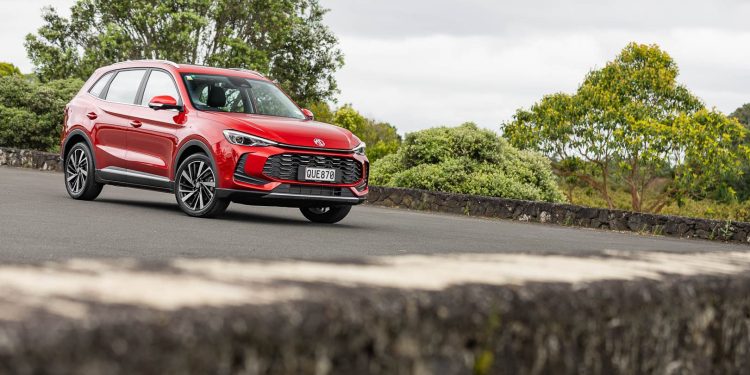2024 MG ZS Hybrid+ Essence review
Words: Peter Louisson | Photos: Isaac Western
Last year EVs were hot to trot but now hybrids are the must have wheels. MG has a good one in its new ZS Hybrid+ and it’s well priced.
MG ZS is amongst the least expensive compact SUVs available here. It has never exactly been high allure or super quality but super value, sure. Built to a price it is.
However, things are changing and nowhere is that more evident than in the latest MG ZS Hybrid+ version. For this is a new vehicle. It’s longer by 104mm, features the more assertive front end of the MG HS Essence and MG3, while the interior quality steps up noticeably.
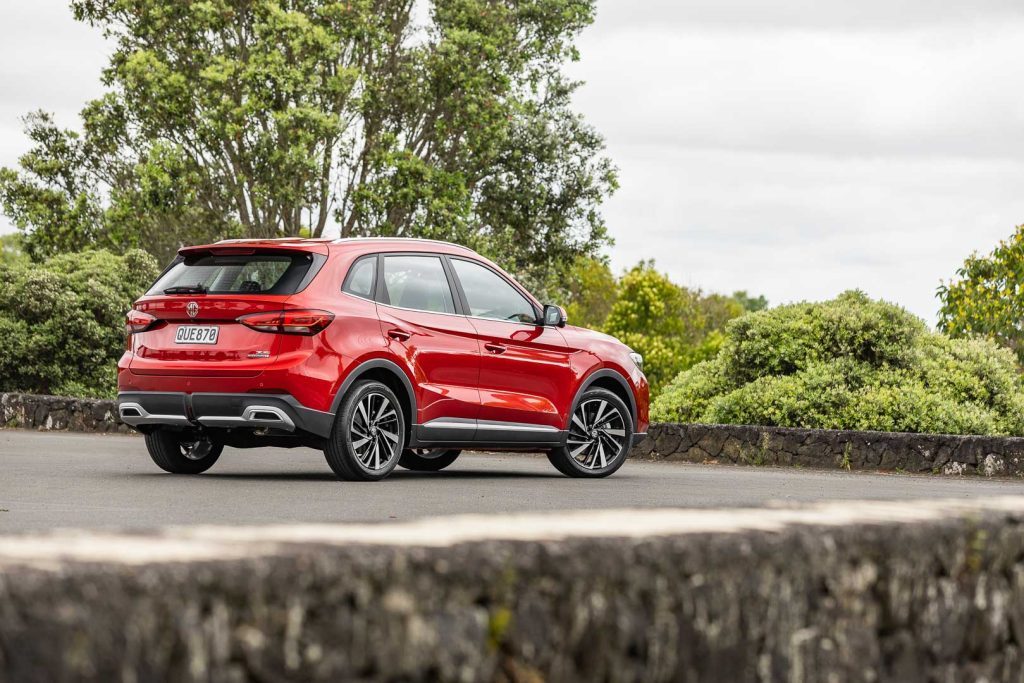
So too do the ride and handling thanks to a new chassis underpinning it. Yes, the hybrid is more expensive, but it’s a sophisticated example. It first arrived in the MG3 and the same Hybrid+ powertrain now powers the new ZS.
Essentially this is a full hybrid, with an Atkinson style motor that acts mainly as a generator for its 1.83kWh battery pack, and a motor that’s substantially more potent. Think 100kW and 250Nm versus 75kW and 128Nm.
The motor does the heavy lifting then, though at times the engine can power the ZS alone as well. It all really depends on driving circumstances.
All you can do as the driver to influence things is mess around with the mode switch (Eco, Comfort or Sport) and regen settings (none to almost one-pedal driving).
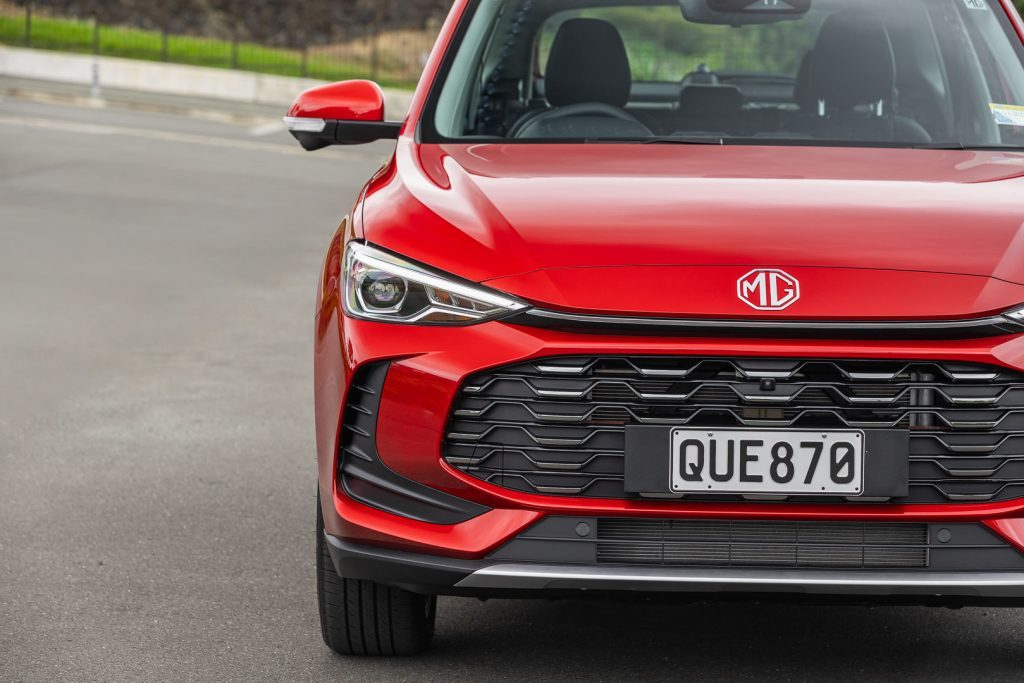
And while there’s no EV button as such, most times you pull to a stop the vehicle will take off again with the engine off. MG rates overall fuel use at 5.2L/100km which ain’t bad for a not quite compact and not quite medium SUV.
Though pricing is more in the former camp while passenger space is more in the latter, being quite generous. So too luggage capacity, up 84L to 443L (1457 max), with a bit more underfloor.
What gives?
I thought this would be a relatively straightforward review until I was alerted to an article in an Australian publication I’d never heard of.
The author suggested the new MG ZS Hybrid+ could be potentially dangerous in rare situations, and the resulting publicity had forced MG to consider a software fix for this.
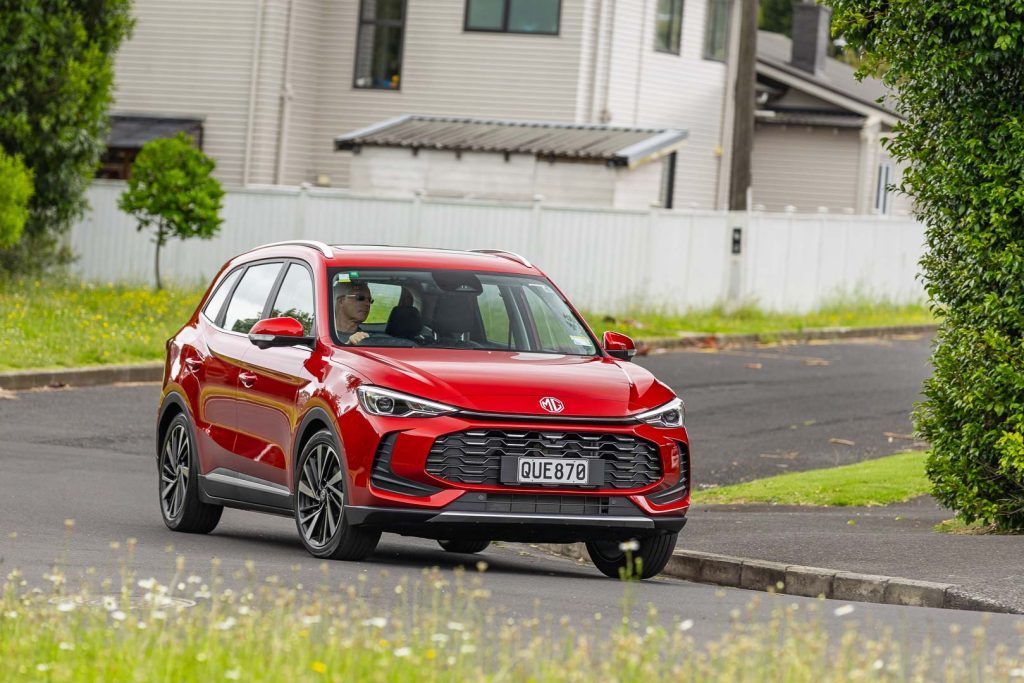
It just so happened that we had the Essence variant of the MG ZS Hybrid+ sitting outside when the story dropped so we attempted to replicate the conditions and determine whether the car is potentially dangerous as stated.
I figured not because we’d driven it at launch, experienced the same performance dropoff and noted that it remedied itself quickly enough after no longer hitting it with a big stick.
Give it a decent strop up a winding hill road and its 1.83kWh battery becomes depleted so the motor has no power source and you’re then reliant on the Atkinson engine alone. Any Atkinson engine is designed for fuel efficiency first and performance not so much.
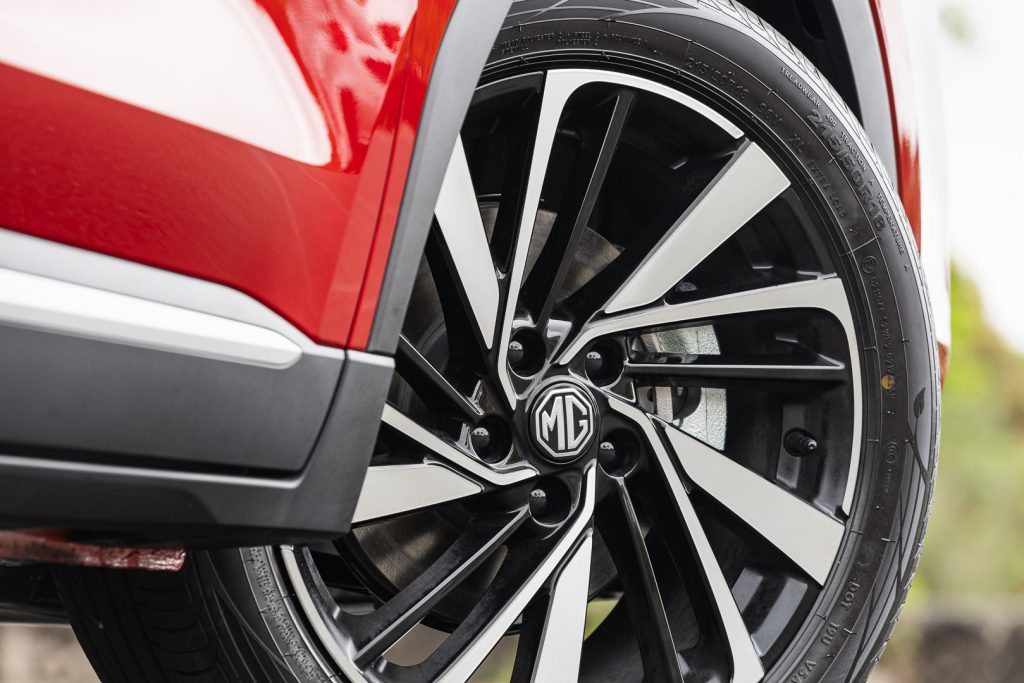
The Aussie publication found that the 75kW/128Nm engine required just under 25sec to motivate the ZS Hybrid+ from 0-100km/h.
Normally, with the motor and engine working together, you’re looking at a time of around 8.2sec and indeed it meets and betters that slightly.
Anyhow, after driving it like we stole it for a while, sure enough, the performance fell away again. However, our figures weren’t anything like as dire as the Aussie ones.
We did four consecutive 0-100 runs with the battery depleted and each time they got slightly worse, but only from 10 to 15 secs. So to get to 25sec, you’d need to do, well, heaps.
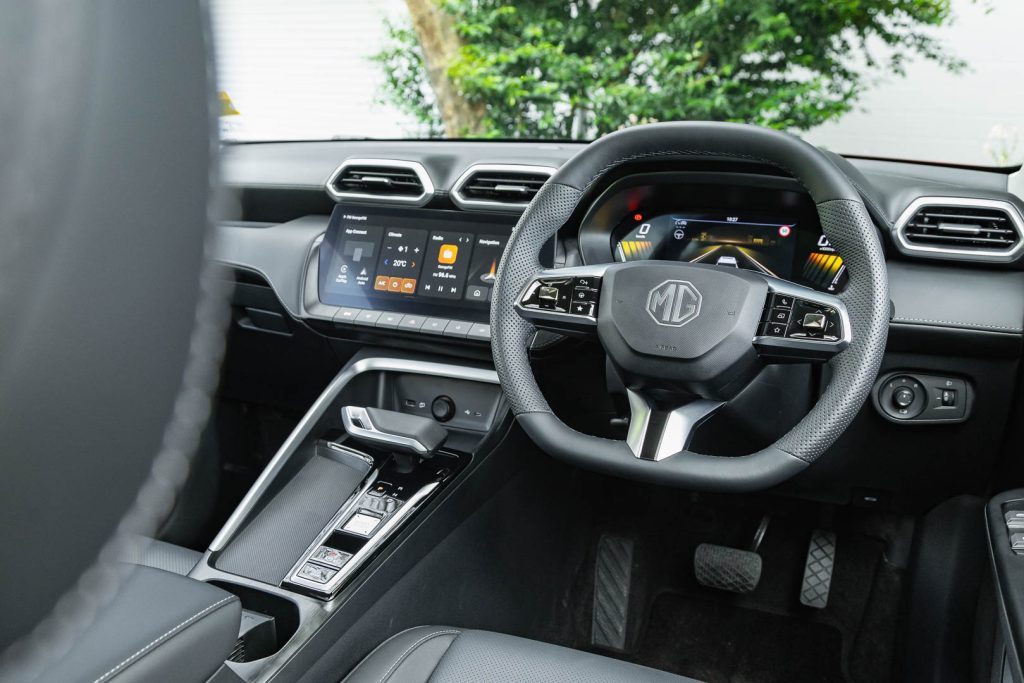
This finding we’d deem irrelevant. How ‘dangerous’ is it taking 25sec to get to 100km/h? Probably less than taking 2.5sec. We’d say the overtaking time is of much more real-world importance re potential driving danger.
From a best 80-120 of 6.2sec with both power sources operating, the overtakes were both 15sec precisely. And here’s the kicker; accumulating speed from 80 to 100 was a bit pedestrian but the time from 100 to 120 felt quite quick enough.
And that’s when you need your vehicle to be a bit more energetic, for the actual overtake.
Arguably that wasn’t our most important finding. After a kilometre or about a minute of easy running, the performance had returned to normal. And that’s exactly what we found on the launch drive.
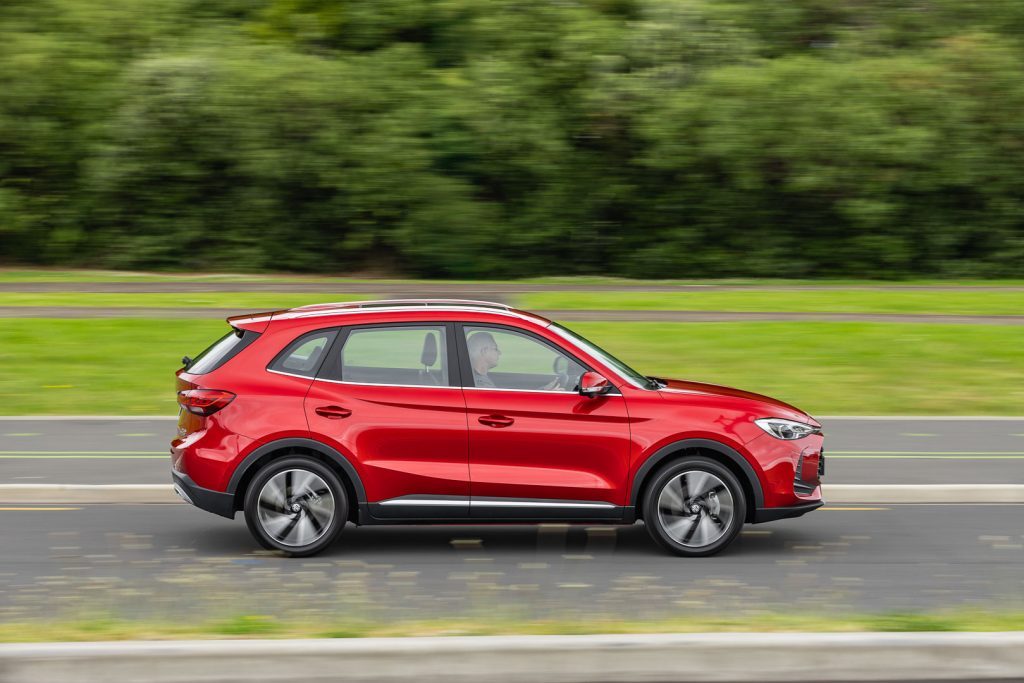
Wait for a bit and it all comes back.
And there’s one other key take home message here. Most owners won’t ever experience this loss of performance because they buy a car like this for its fuel efficiency, not its performance which we think, FWIW, is pretty gratifying when you really need it.
Anything that can sip fuel in the fours and still feel reasonably rapid on the go is more than okay by us. So, in essence, this appears like a beat up, a storm in a teacup.
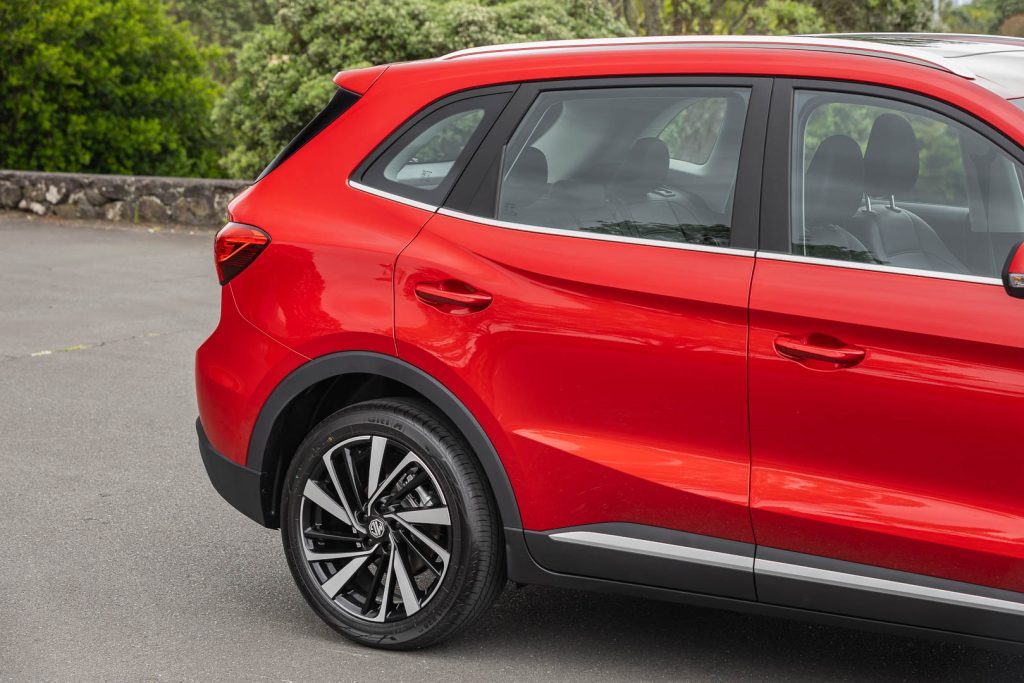
How’s it go in normal running then?
Pretty, pretty, pretty well. Given you’re almost never driving hard out, and generally doing the opposite, this hybrid runs as an EV a surprising amount of the time. Like with most hybrids, its least efficient driving style is doing a constant 100 on the motorway system.
Then fuel use will be somewhere between 5 and 6L/100km. But as soon as you drop below that, when traffic builds and you’re down to 80km/h or less, it requires less engine input.
Performance testing put the fuel use figure up from around 5.0 on the motorway to 6.7L/100km, still pretty abstemious. On the motorway in traffic and at 80km/h conditions, we’d seen fuel use in the fours.
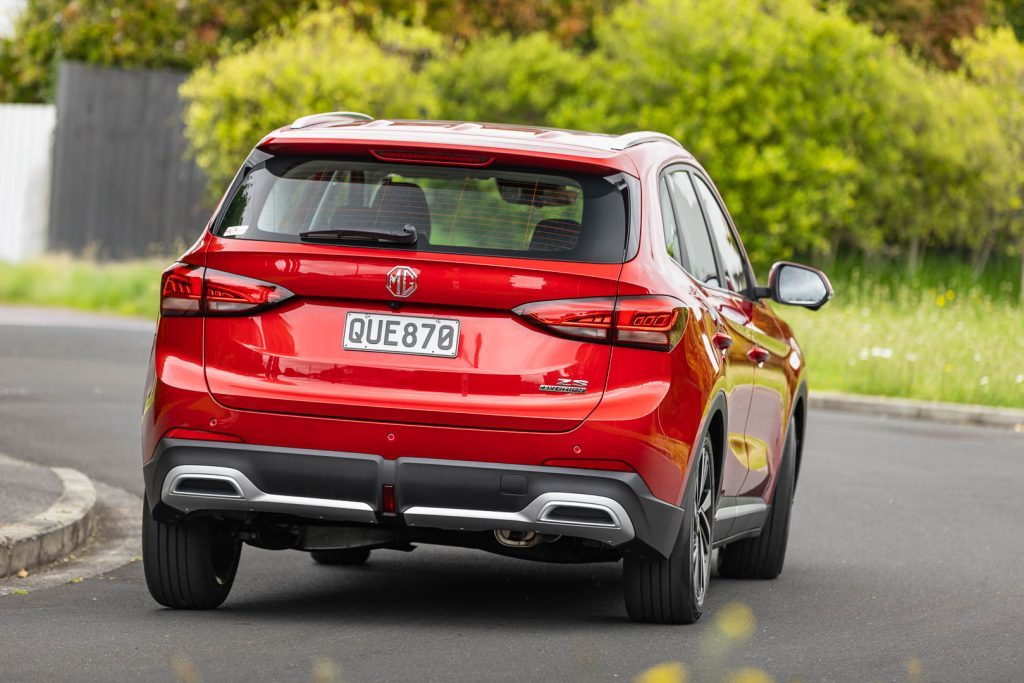
And later on, driving easily we found low fours was possible. The MG people had said that on the launch too. In stop/start town driving you may be able to do as well.
If you’re on chip seal, you often won’t even hear (or feel) the engine kick back in but will just notice it is no longer using 0.0L/100km (shown on the right side of the main dial).
The three-speed transmission sometimes has the engine spinning a bit more than you might expect but then engines running as generators often do that. Every time the engine’s off, you can watch the L/100km slowly tick down.
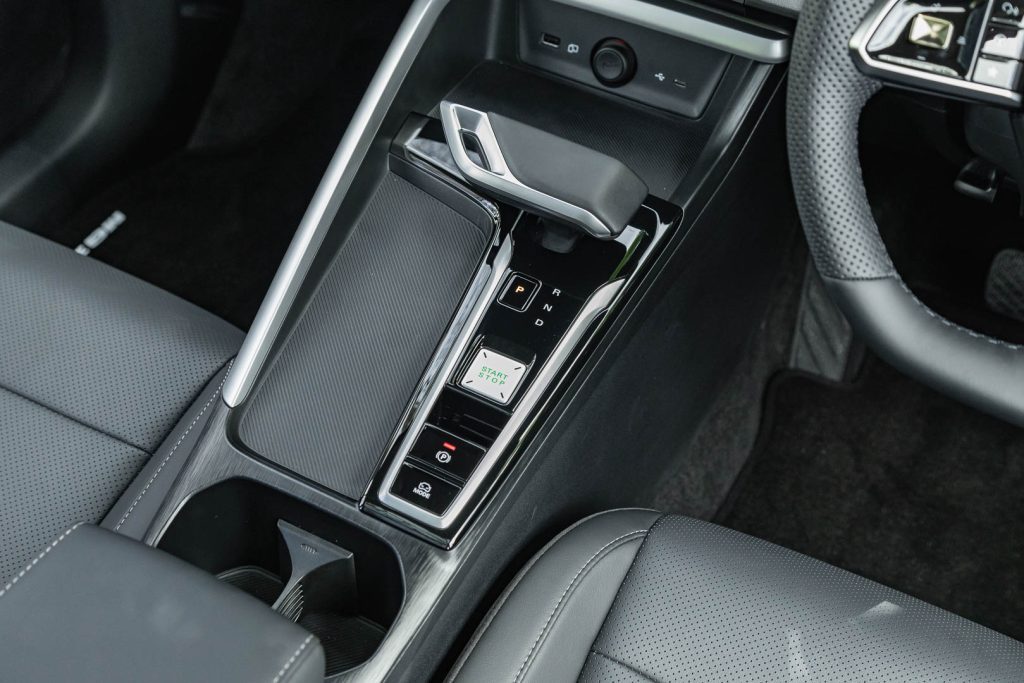
The advantage of having an engine aboard is that with a full tank you’re looking at range of around 750km. And any refill takes a couple of minutes (though it does require 95ULP) instead of parts of an hour because this hybrid has no plug.
Less great parts?
Under active cruise it can sometimes feel a bit jerky on downhill runs, maintaining a set speed. We just cancelled it with a brake tap and reset the system at the bottom.
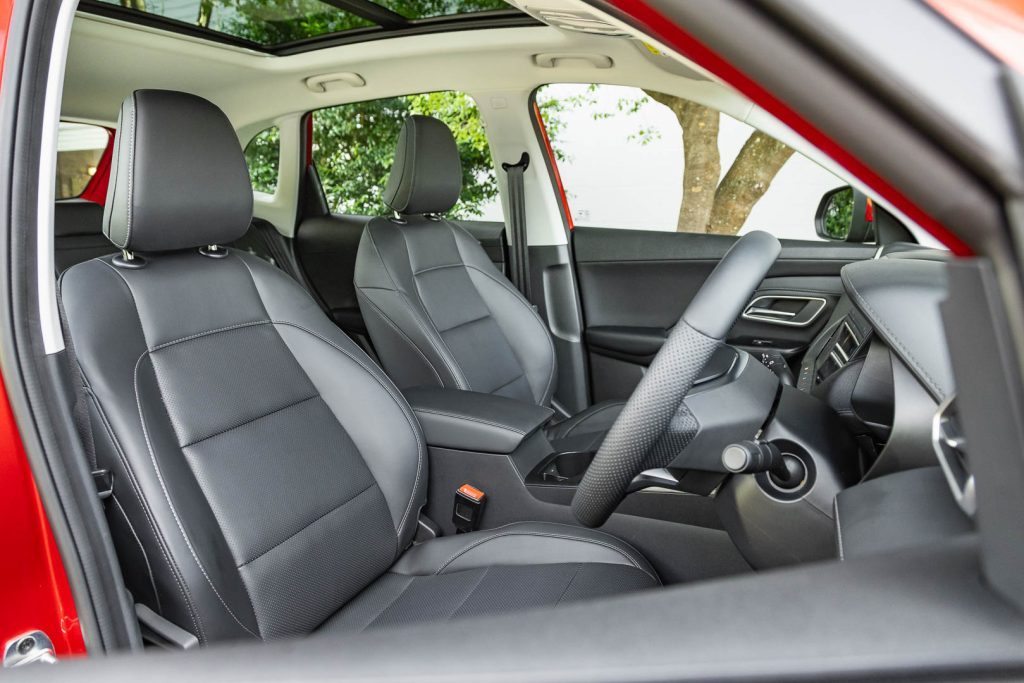
We liked that you can set one of the shortcut buttons to change regen settings, handy to have that on the go instead of having to mess with touchscreen menus.
About the only thing you regularly need to do before setting off is silence the overspeed warning. All the others are handy to have active and/or don’t bong much. The lane keeping system in this is good.
It seldom activates and when it does isn’t overbearing.
Moreover, this rides and handles well for a front-drive crossover. Probably its worst sin is not having telescopic steering adjustment which won’t suit taller drivers.
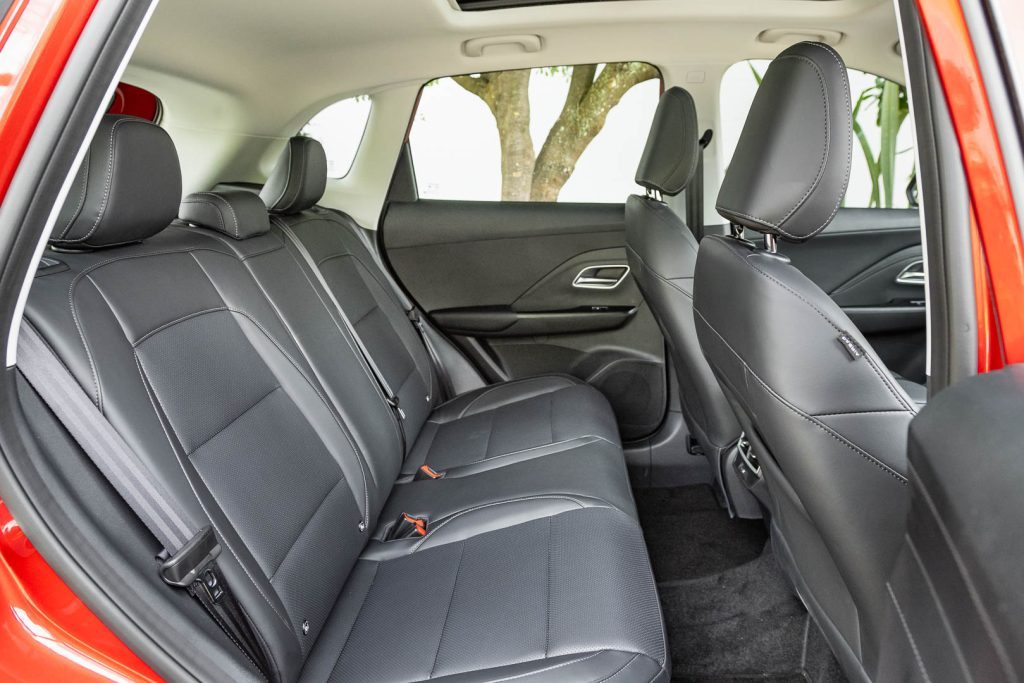
The squab is a little uptilted as well at the seat’s lowest setting but compensates with strong lumbar adjustability, manual, while the driver’s seat is powered.
There’s no Qi charger but you can always bring a USB cable for that.
For its sins, there’s no powered fifth door either and some may find it a bit heavy. It often seems to only half shut as well, which you later discover when it toots as you go to lock up. Or failing that, active cruise won’t activate once you’re on the go.
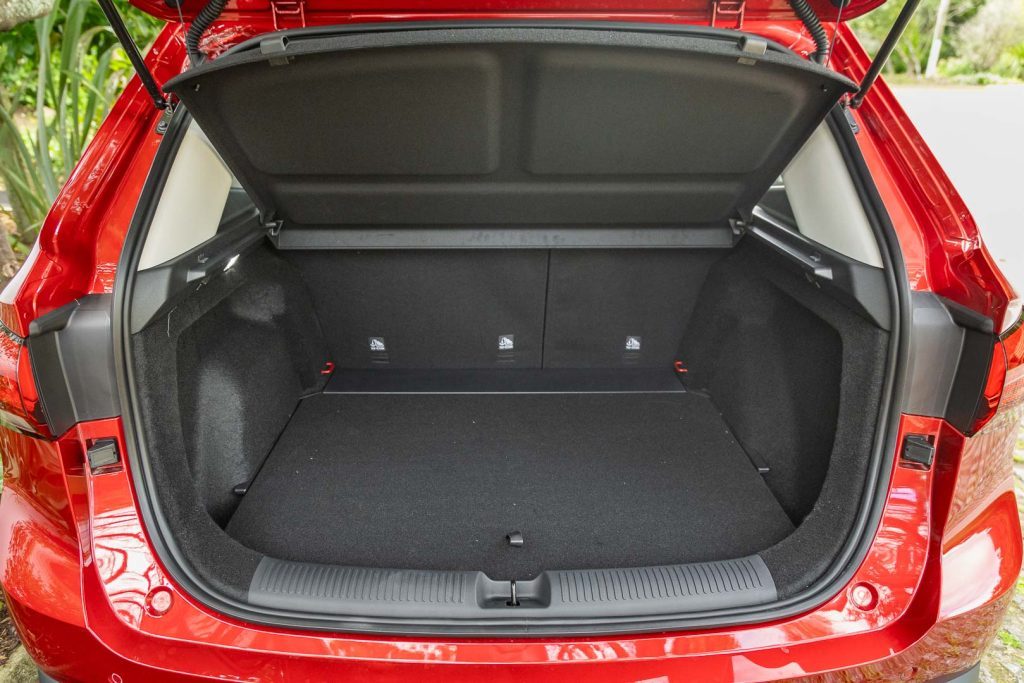
This Essence offering has a sticker price of $39,990. For $36,990 you can have the same thing only without the seat electrics, heating, leather wheel and panoramic sunroof.
There’s no leather-like upholstery either, and wheels are 17s instead of 18s.
But the powertrain is the same, and you still get some nice stuff, like the surround view camera, LED lights, all the MG Pilot aids, drive and regen modes, sat nav, lots really. Plus the 10-year warranty.
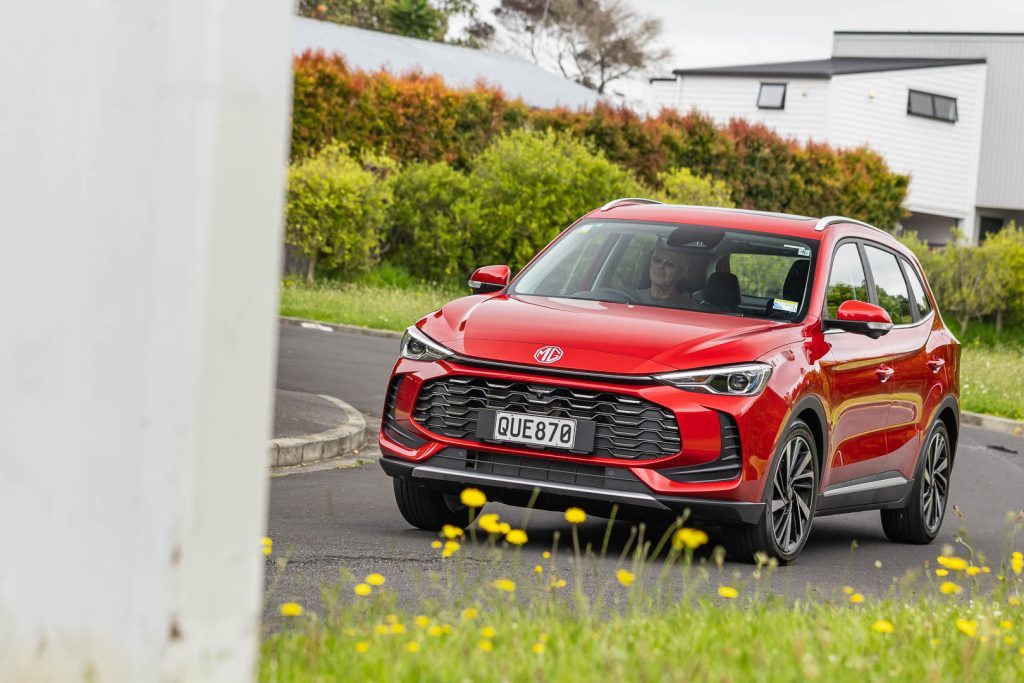
Next year, the ICE version will arrive, and for those who can stomach paying the same amount of RUCs as diesel utes, a brand new EV version which is bound to be a significant step up on the outgoing model.
| Model | MG ZS Hybrid+ Essence |
| Price | $39,990 |
| Engine / Battery | 1498cc, IL4, EFI / 1.83kWh |
| Power | 75kW@6000rpm |
| Torque | 128Nm@4500rpm |
| Motor Output | 100kW / 250Nm |
| Drivetrain | 3-speed auto / FWD |
| Turning circle | 10.64m (2.6 turns) |
| Fuel Use | 5.2L/100km |
| C02 Output | 120g/km |
| 0-100km/h | 7.75 sec |
| Tyre Size | 215/50R18 |
| Fuel Capacity | 41L |
| Stability systems | ABS, ESP |
| Safety | AEB, ACC, BSM, LDW, RCTA, ALK, AHB |
| Luggage Capacity | 443-1457L |
| Tow rating | 500kg |
| Service intervals | 12 months/16,000km |
| Warranty | 10 years/250,000km |
| ANCAP rating | Not yet rated |
| Weight | 1420kg (claimed) |
This article first appeared in the December/January 2025 issue of NZ Autocar magazine.


